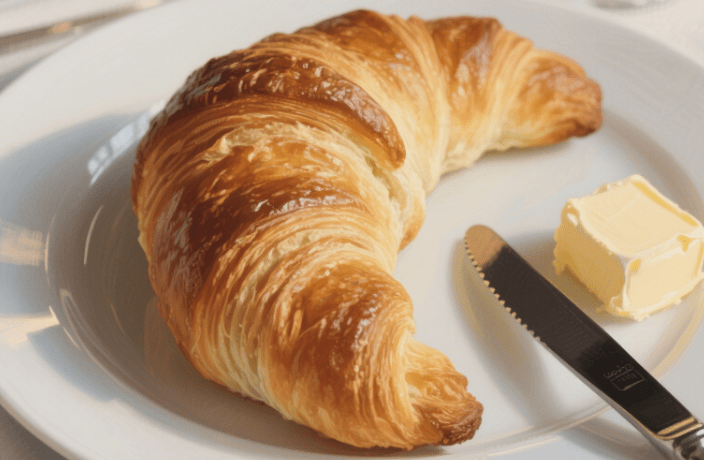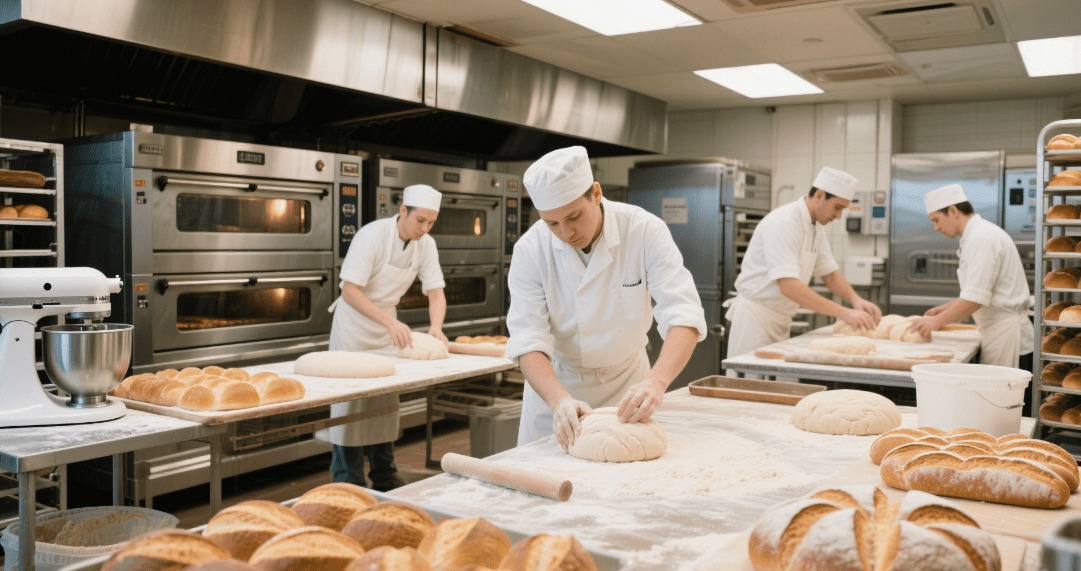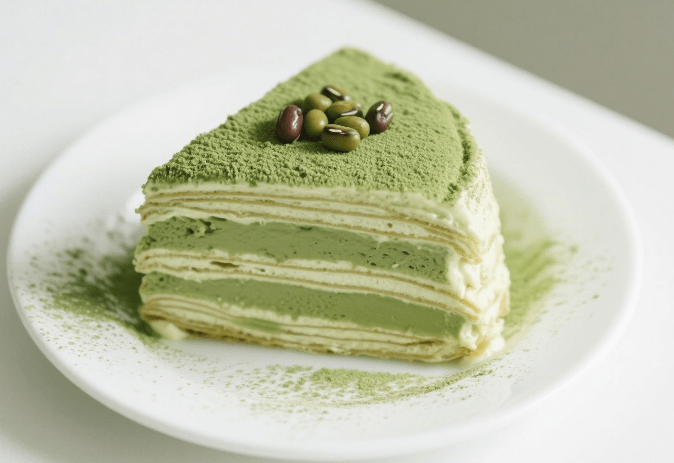With the development of modern baking technology, there are more and more types of commercial ovens. However, this has instead made it difficult for many practitioners in bakeries and pastry shops to choose.
What makes the best commercial bread oven? In which aspects does it need to perform excellently? Is it uniform and stable heating, sufficient capacity, or excellent temperature control accuracy? This article will provide a comprehensive reference around these issues.
What Makes the Best Commercial Bread Oven? Consider the Following Core Performances
Prioritize the Suitable Heating Methods for Commercial Bread Ovens
Let’s first compare the advantages, disadvantages, and applicable scenarios of ovens with hot air circulation, shelf heating, etc.
| Heating Method | Suitable Foods for Baking | Performance | Scenarios | Cost | Power Consumption |
| Hot Air Circulation | Hard bread such as baguettes and European-style bread; biscuits, pastries | Uniform heating, can bake a large number of foods at the same time, wide temperature adjustment range | Large bakeries, baking factories | High initial investment in kitchen equipment purchase | High power consumption |
| Shelf Heating | Soft bread such as toast and meal buns; cakes | Can control temperature independently for each layer | Small and medium-sized bakeries, cafes | Lower purchase cost than hot air circulation ovens, low maintenance cost | Medium power consumption |
| Stone Slab Heating | Pizza, Italian bread and other foods that need a crispy bottom | Can make the bottom of the food crispy | Specialized pizza or Italian bread shops | Higher purchase cost of stone slabs | High power consumption |
| Infrared Heating Oven | Small batches of bread, snacks, and foods that need rapid heating | Fast heating speed | Small bakeries, family workshops | Lower equipment purchase cost, small initial investment, low maintenance cost | Medium power consumption, relatively reasonable in small-batch production |
From the above table, you can intuitively feel the suitable baking scenarios for different ovens. Generally speaking, infrared heating ovens are suitable for small-batch bread baking, and soft bread is suitable for baking with commercial deck ovens.
Baguettes, European-style bread and other hard bread are suitable for baking with hot air circulation ovens.

Choose a Commercial Bread Oven with High Temperature Control Accuracy
If a commercial bread oven has poor temperature accuracy, it must not be a good oven. On the market, the actual temperature of some cheap ovens may even deviate by 4 degrees from the preset temperature, which seriously affects the quality of your bread baking.
For example, baking baguettes has extremely high requirements on temperature. A temperature deviation will cause the bread crust to fail to form a crispy texture, and the inside will not be fluffy enough, resulting in a failed baking.
No customer likes to buy products with unstable quality, and the same goes for bread. If the temperature is unstable and inaccurate, it will cause the bread to be overcooked and have a bitter taste; or the appearance of the food will not be golden enough, which seriously affects the aroma of the bread. When customers feel the unstable quality of the bread with their taste buds, they will almost no longer choose this bakery brand and instead choose another store.
What kind of temperature control accuracy is better?
Generally speaking, professional commercial bread ovens have a temperature control accuracy of ±1℃ to ±2℃.
Take making macarons as an example, the optimal baking temperature is between 160-170℃, and only professional ovens with high temperature control accuracy can precisely control it within this range.
Another example is making chiffon cakes, precise temperature control can ensure that the cake expands evenly, avoiding surface cracks that affect the appearance.

What Makes the Best Commercial Bread Oven? About Baking Capacity
When choosing a bread oven, it is not that the larger the better. Because generally speaking, for the same brand, the larger the oven, the higher the cost.
This article summarizes a reference for choosing the oven capacity:
| Daily Bread Output (about 100-150g per piece) | Recommended Oven Capacity Range | Characteristics | Applicable Scenarios |
| Less than 50 pieces | 20-40L | Takes up little space, flexible to operate, also suitable for temporary increase in output | Small community bakeries, affiliated baking areas of cafes, family workshops |
| 50-200 pieces | 40-100L | Can bake multiple trays of bread at the same time, balancing efficiency and flexibility | Small and medium-sized bakeries, chain bakery brand community branches |
| 200-500 pieces | 100-200L | Large capacity design, multi-shelf structure, can bake a large number of pieces at one time, needs to be assisted by automatic operation | Regional chain bakeries, baking central kitchens |
| More than 500 pieces | More than 200L | Industrial-grade large capacity, supports continuous mass production | Large baking factories, central kitchens |
Supplementary notes:
- If baking toast over 400g or large European-style bread, you can increase the capacity by 20% based on the corresponding output to avoid overcrowding of bread.
- During peak consumption periods such as breakfast and evening, it is recommended to increase the basic capacity by 20%-30%.
- Stores planning to expand their business can choose a capacity one level higher to avoid repeated investment in a short period of time.
Timing Function
For some practitioners who buy ovens, the timing function may seem unimportant. But in fact, it is indeed the core of controlling bread quality – because precise timing can avoid food being overcooked or undercooked.
A YouTube influencer once did an experiment. If the baking time error of the same type of bread exceeds 30 seconds, the crispness of the crust will decrease significantly, and the difference in internal humidity can be seen intuitively.
With the timing function, the baking time error can be controlled within 5 seconds, which means that no matter which chef operates, the product quality is guaranteed.
Especially in high-cost mass production occasions such as central factories, the baking temperature and time for each type of bread will be preset as a fixed program, and the timing function can strictly implement this standard.
Therefore, new employees can produce qualified bread according to the standard process without long-term training. In addition, the timing function can also improve production efficiency. Precise timing allows the proofing and baking time of the next batch of dough to be seamlessly connected.
Moisturizing Function
Although baguettes and European-style bread have a low dependence on the moisturizing function, it is almost necessary for soft bread such as toast, meal buns, sweet bread, and hamburger buns.
For customers who like soft bread, the core of maintaining the taste is that the inside of the food has a certain moisture content. Consumers like this kind of bread because of its soft, delicate and tender texture. If the baking oven does not have a moisturizing function, it will cause the crust to dry quickly, making the bread taste dry and hard.
Of course, the moisturizing function also plays a significant role in hard bread. Take baguettes as an example, the initial stage of baking requires 80%-90% humidity, which is convenient for the yeast to continue fermenting, making the bread expand to form fluffy internal air holes.
If the humidity is insufficient at the initial stage of baking, it will lead to insufficient fermentation of the yeast and too small holes inside the bread.
Ease of Cleaning
For many employees responsible for kitchen hygiene, cleaning the oven every day is a very troublesome thing. Moreover, an easy-to-clean oven can definitely improve the chef’s job satisfaction and is beneficial to the development of the bakery in the long run.
So what kind of commercial bread oven is easier to clean? The design of the following key components is important:
- Ovens with food-grade 304 stainless steel inner liners have smooth surfaces and oil stains are not easy to adhere.
- The baking trays, grilles, and crumb trays are designed to be detachable, so they can be taken out and rinsed directly during cleaning.
- Some commercial ovens are equipped with high-temperature self-cleaning or steam cleaning functions.
- The corners of the oven liner adopt arc transitions instead of right angles to avoid water accumulation in the corners and reduce mold growth.



